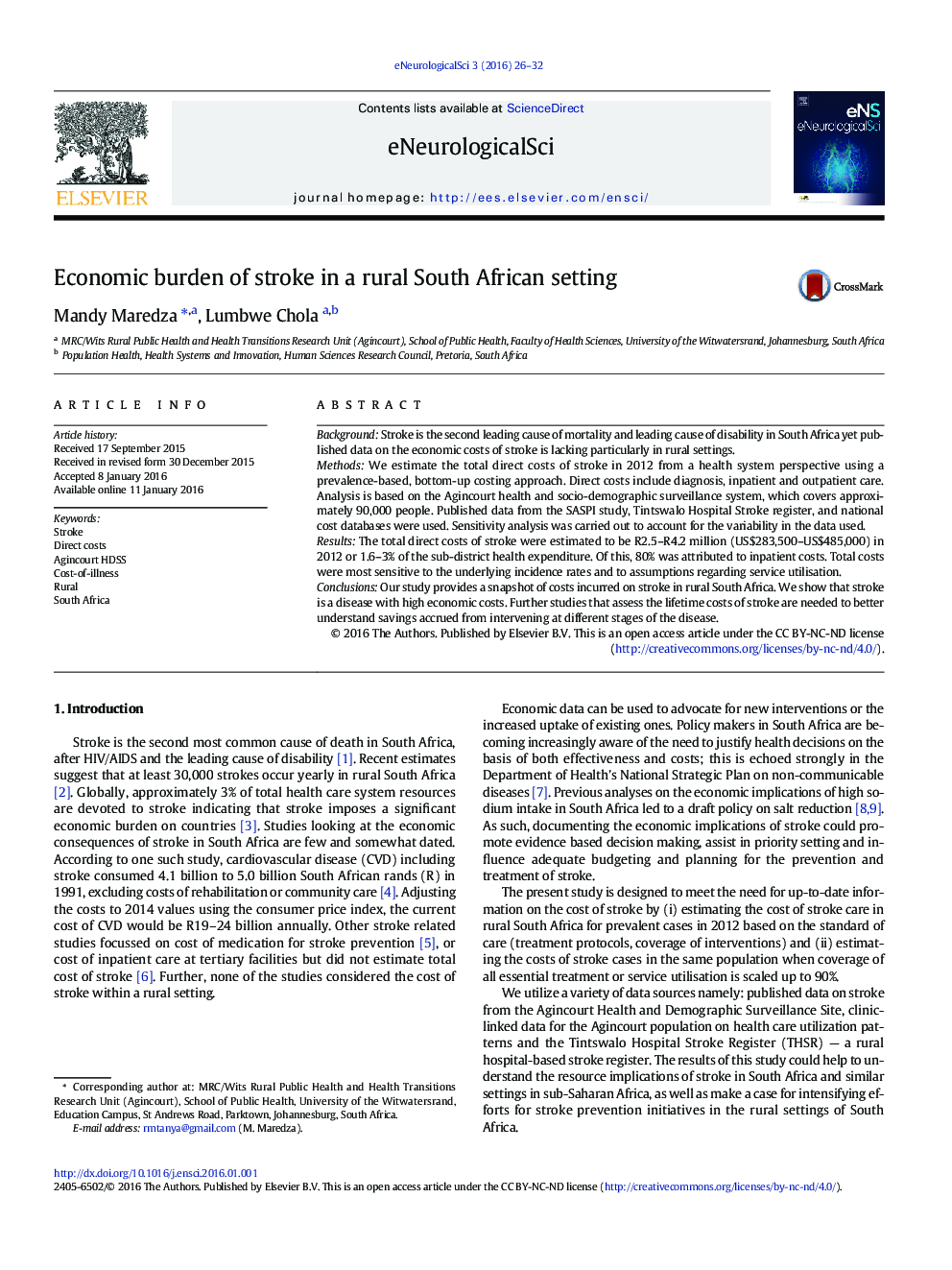| Article ID | Journal | Published Year | Pages | File Type |
|---|---|---|---|---|
| 3049517 | eNeurologicalSci | 2016 | 7 Pages |
•We present the first estimates of costs of treating stroke in rural South Africa.•Stroke imposes a high economic burden in this setting.•Total direct costs of US$283,500 –US$485,000 represent 1.6-3% of the sub-district health expenditure.•Cost-of-illness studies for stroke can be conducted using available information sources.
BackgroundStroke is the second leading cause of mortality and leading cause of disability in South Africa yet published data on the economic costs of stroke is lacking particularly in rural settings.MethodsWe estimate the total direct costs of stroke in 2012 from a health system perspective using a prevalence-based, bottom-up costing approach. Direct costs include diagnosis, inpatient and outpatient care. Analysis is based on the Agincourt health and socio-demographic surveillance system, which covers approximately 90,000 people. Published data from the SASPI study, Tintswalo Hospital Stroke register, and national cost databases were used. Sensitivity analysis was carried out to account for the variability in the data used.ResultsThe total direct costs of stroke were estimated to be R2.5–R4.2 million (US$283,500–US$485,000) in 2012 or 1.6–3% of the sub-district health expenditure. Of this, 80% was attributed to inpatient costs. Total costs were most sensitive to the underlying incidence rates and to assumptions regarding service utilisation.ConclusionsOur study provides a snapshot of costs incurred on stroke in rural South Africa. We show that stroke is a disease with high economic costs. Further studies that assess the lifetime costs of stroke are needed to better understand savings accrued from intervening at different stages of the disease.
